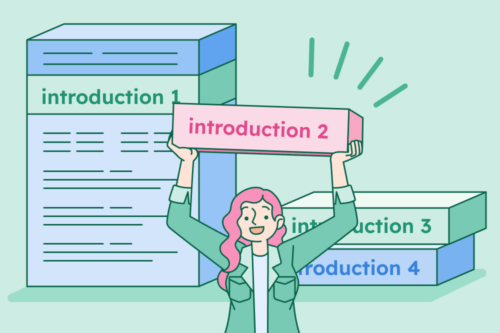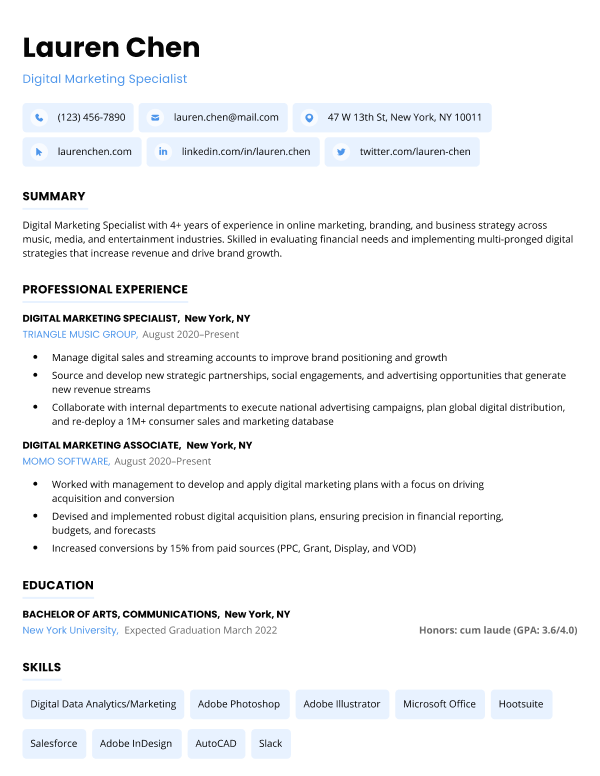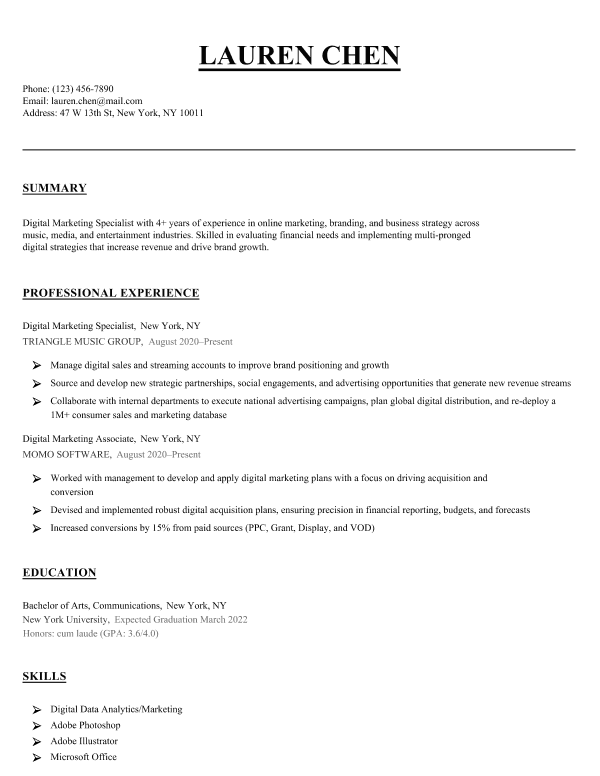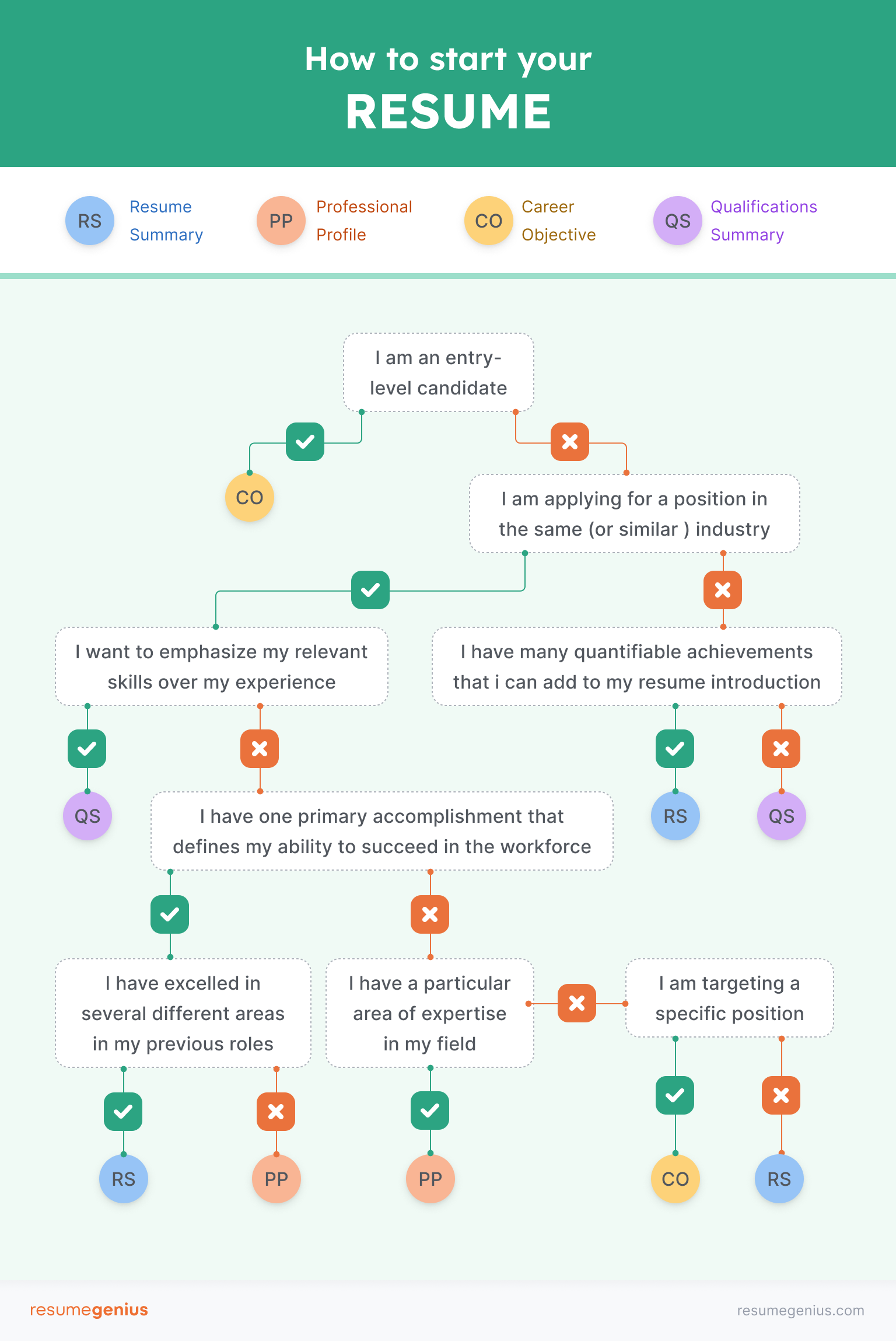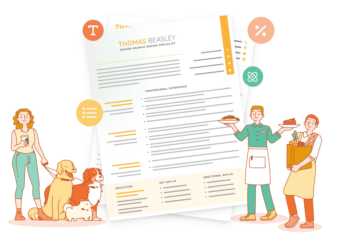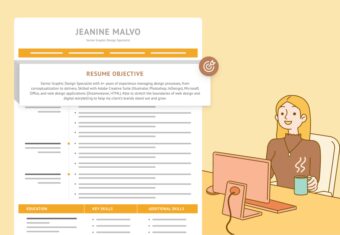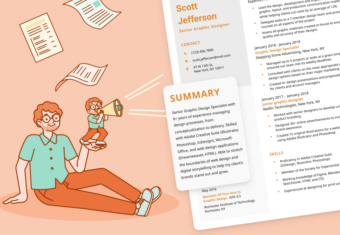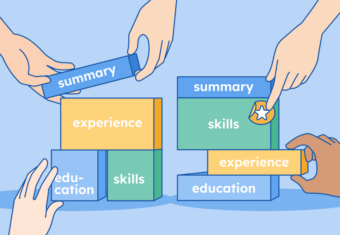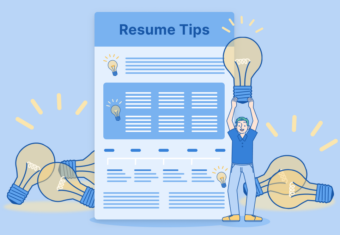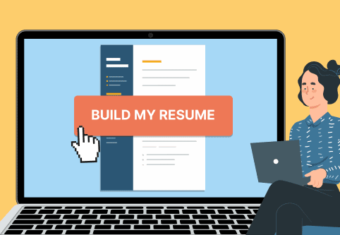There are four main types of resume introductions:
- Resume objective
- Summary of qualifications
- Resume summary
- Resume profile
Our free-to-use resume builder can make you a resume in as little as 5 minutes. Just pick the template you want, and our software will format everything for you.
Follow the flowchart below to find out which type of resume intro is right for you:
Below we explain the differences between each resume introduction and show you how to write them.
Resume objective
Resume objectives (also known as career objectives) are great if you’re just entering the workforce or only have 1–2 years of experience.
A good resume objective tells the hiring manager what you’re looking for, what you have to offer, and why you’re a good fit for the position.
A resume objective should include:
- # of years of work or internship experience and the job duties performed
- Qualities, skills, and abilities you have that are relevant to the job (you must be able to demonstrate these skills in the professional experience section)
- A closing statement describing your objective (i.e., how you plan to use your qualifications to help the company)
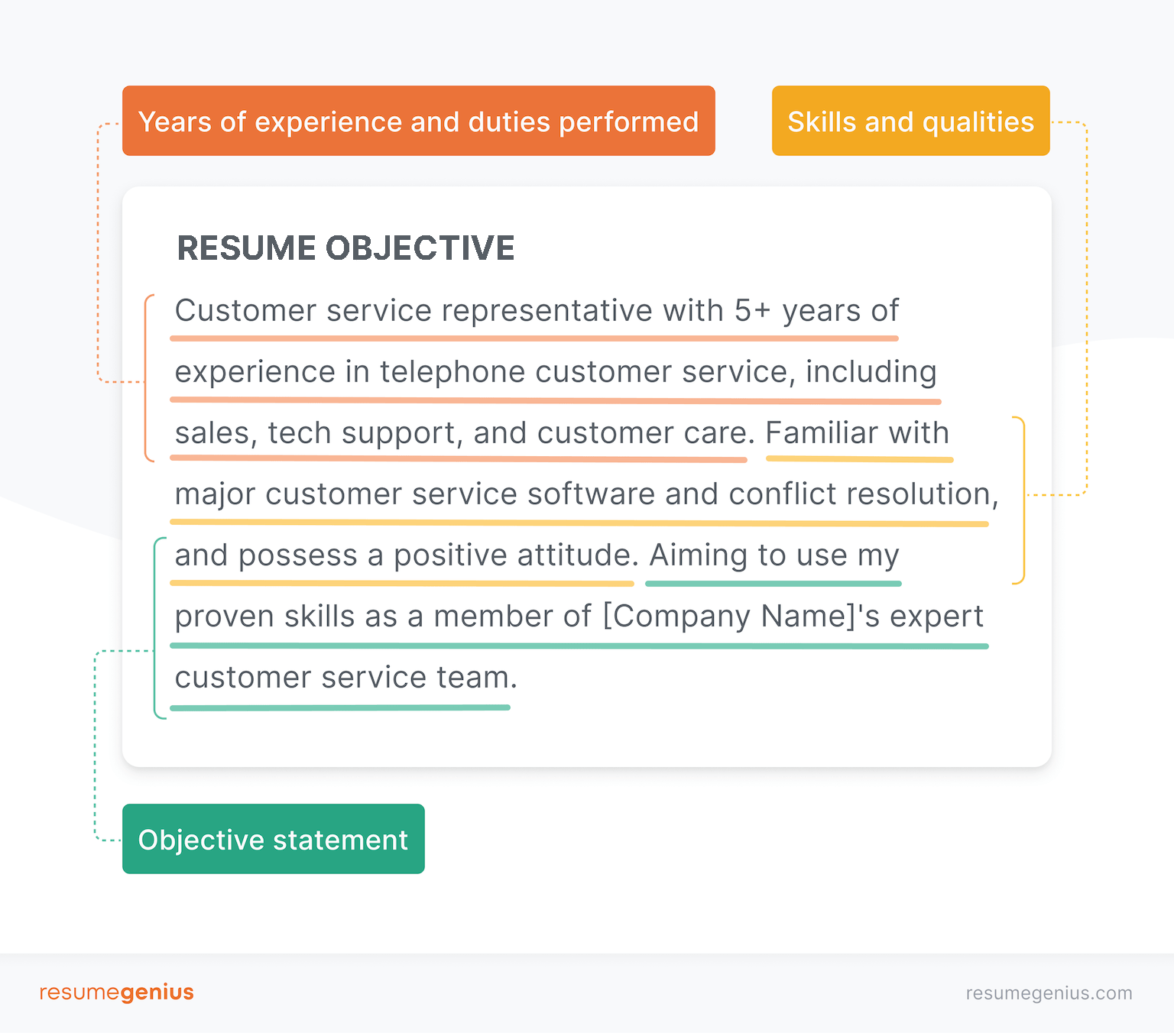
Career objective example (text version)
Resume objective
Customer service representative with 5+ years of experience in telephone customer service, including sales, tech support, and customer care. Familiar with major customer service software and conflict resolution, and possess a positive attitude. Aiming to use my proven skills as a member of [Company Name]’s expert customer service team.
Summary of qualifications
A summary of qualifications (also known as a qualifications summary) is best if you are switching industries and want to showcase your transferable skills and relevant achievements. A qualifications summary should contain 5-6 bullet points that:
- Emphasize your skillset
- Highlight qualities that make you an ideal candidate
- Showcase your biggest career accomplishments
The order of the bullet points is up to you. However, we suggest listing the most relevant and impressive first to attract recruiters’ interest.
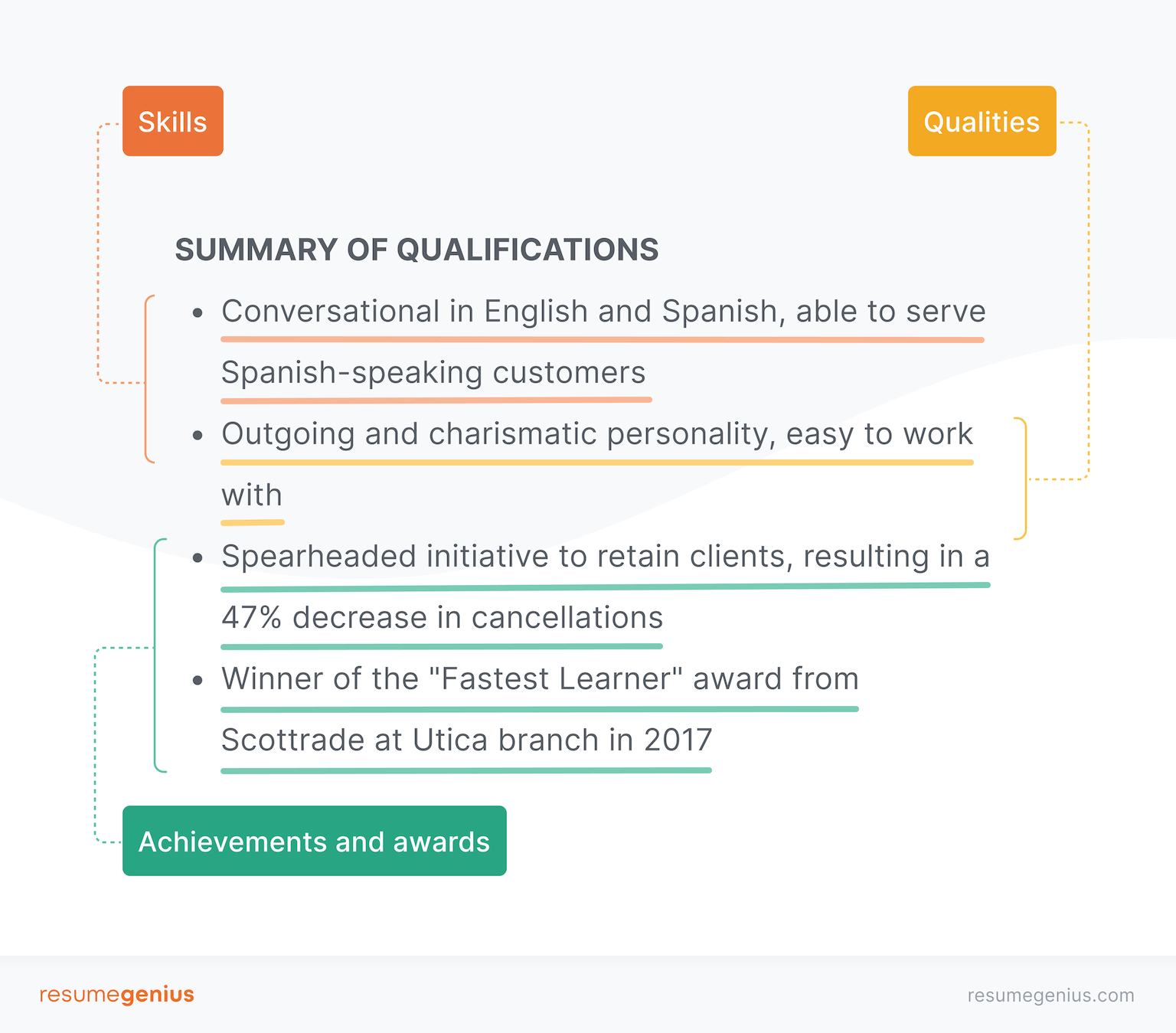
Summary of qualifications example (text version)
Summary of qualifications
- Conversational in English and Spanish, being able to serve Spanish-speaking customers
- Outgoing and charismatic personality, easy to work with
- Spearheaded initiative to retain clients, resulting in a 47% decrease in cancellations
- Winner of the “Fastest Learner” award from Scottrade at Utica branch in 2017
Resume summary
A resume summary is the right choice if you have many career accomplishments to showcase. Resume summaries are also versatile because they can be used if you’re seeking work in the same industry or are trying to make a career change.
Your resume summary can be formatted as a 2-4 sentence paragraph or as a list, and should mention:
- # of years of experience
- Skills and career accomplishments backed up by data whenever possible
- Relevant certifications
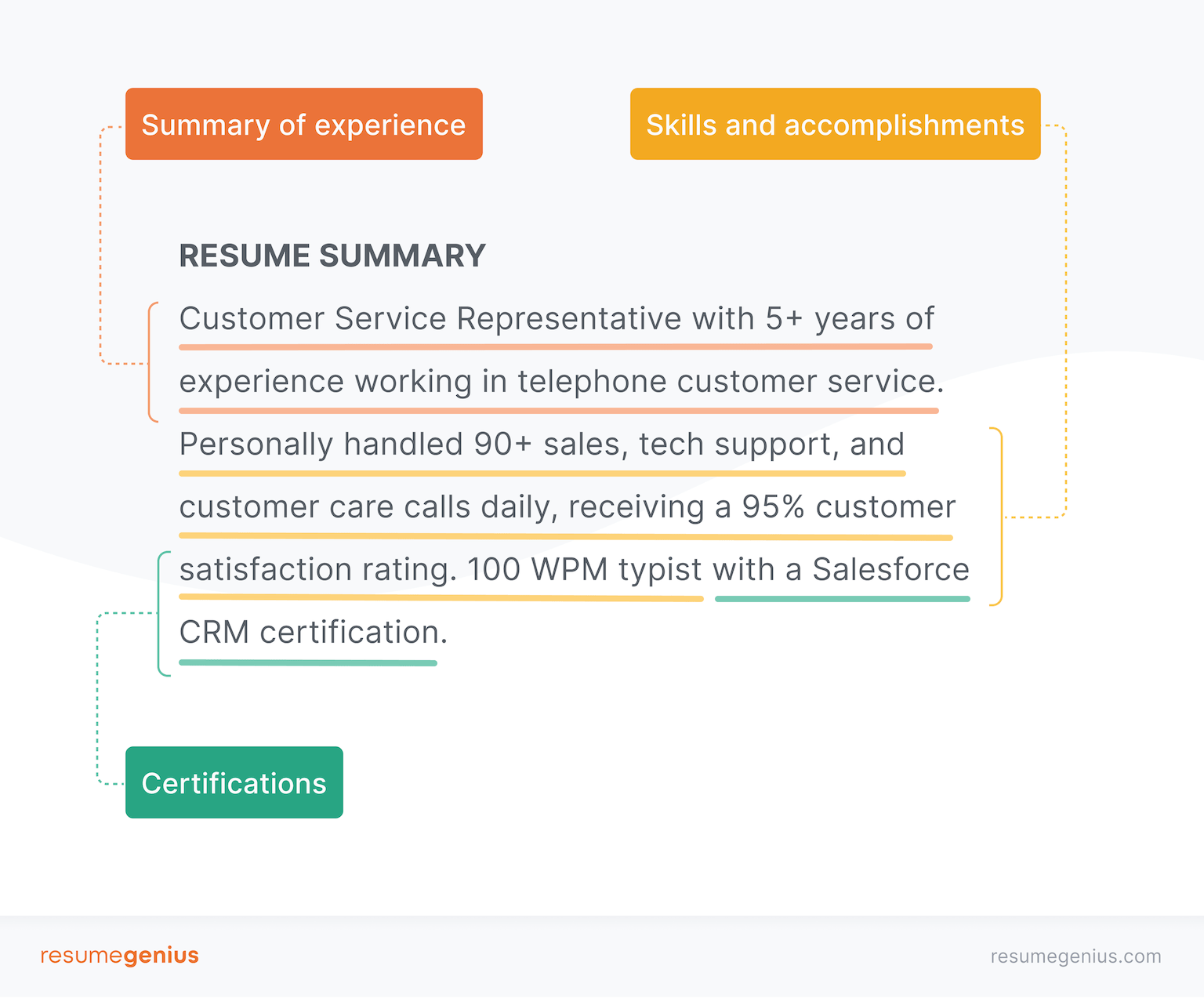
Resume summary example (text version)
Resume summary
Customer Service Representative with 5+ years of experience working in telephone customer service. Personally handled 90+ sales, tech support, and customer care calls daily, receiving a 95% customer satisfaction rating. 100 WPM typist with a Salesforce CRM certification.
Resume profile
A resume profile (also known as a professional profile) is somewhere in between a career objective and qualifications summary. Your resume profile should include the following information:
- # of years of experience
- Specialty or job duty you excel at
- Transferable skills and career achievements
If you need to write an introduction for your LinkedIn profile or website, check out our professional bio examples to get some ideas.
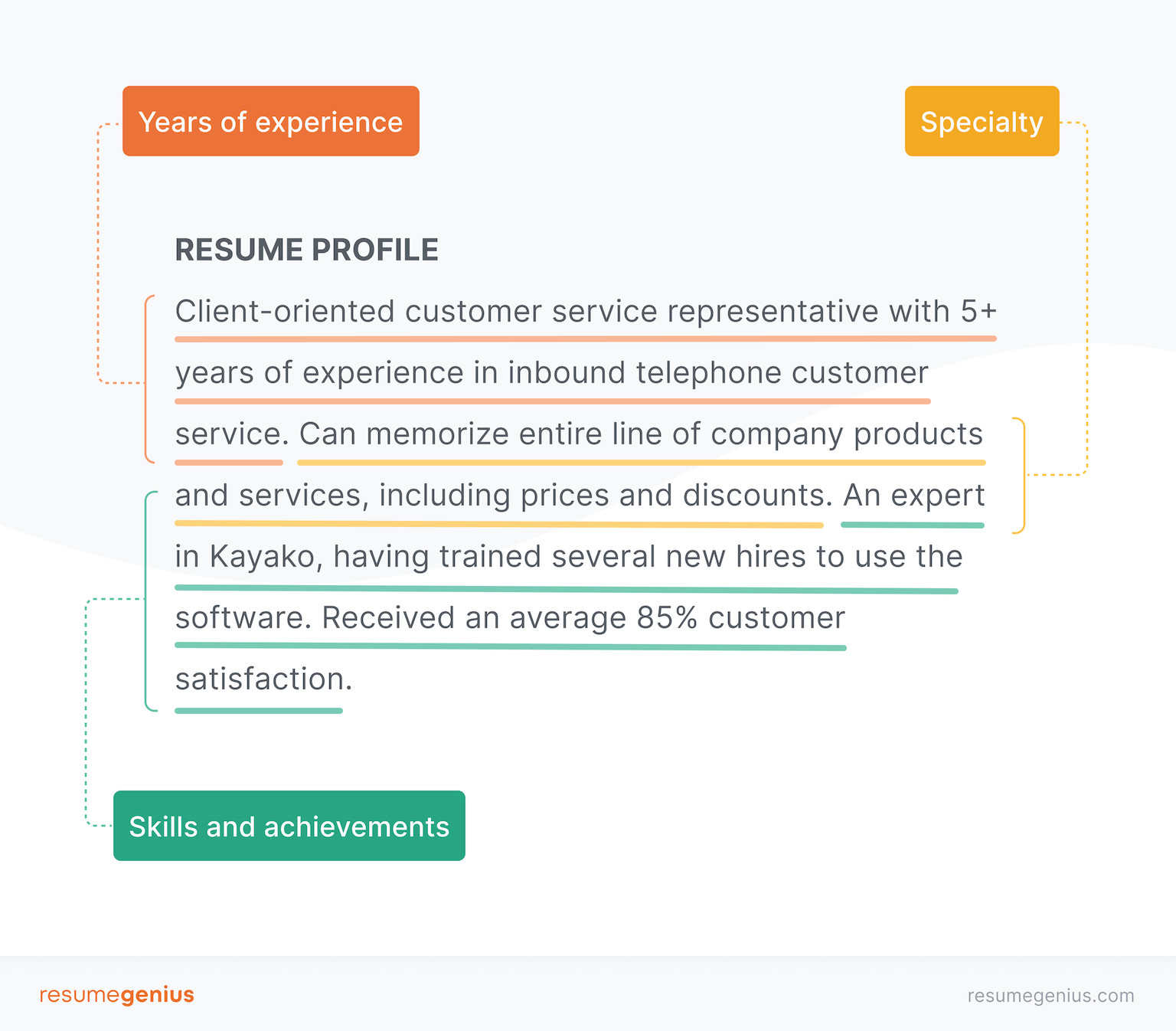
Resume profile example (text version)
Resume profile
Client-oriented customer service representative with 5+ years of experience in inbound telephone customer service. An expert in Kayako, having trained several new hires to use the software. Can memorize entire line of company products and services, including prices and discounts. Received an average 85% customer satisfaction rate.
Tips for writing a good resume introduction
Your introduction is one of the first sections prospective employers will see on your resume, so it’s important to make a good first impression.
An effective introduction should quickly communicate who you are and why you’re an excellent fit for the role.
Here are some tips for writing a compelling resume introduction:
1. Keep it concise
Hiring managers and recruiters often spend just seconds scanning a resume before deciding whether to give it more attention. A long, wordy introduction is more likely to bore them or cause them to stop reading.
A tight, concise introduction grabs attention and demonstrates good communication skills. Aim for no more than 3-4 sentences.
2. Tailor it to the role
Generic introductions suggest a lack of enthusiasm. Your introduction should highlight your skills and accomplishments that are most relevant to the job you’re applying for. This shows the hiring manager that you understand and meet the requirements of the role.
Read the job description closely and identify keywords to use in your introduction that align with your work experience to show that you’re a strong match.
3. Communicate your value
A strong resume introduction highlights your unique combination of experience, knowledge, and skills, and demonstrates why you’d be an asset to the company.
Quantify achievements and provide specific examples whenever possible. Numbers and metrics stand out to hiring managers who may be skimming introductions and show that you can back up your achievements.
Click to rate this article
4.3 Average rating


